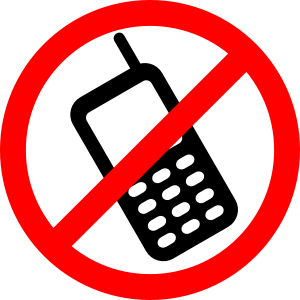Getting data from high school students on what computer devices they have, how often they use them, and for what purposes is uncommon.
In 2014-2015, a Northern California high school teacher, Sara Denniston (pseudonym), (see here and here) surveyed 211 of her history students about their daily use of computer devices, the devices they use, and whether they like to read online. For questions on the survey she constructed the choices that students picked. She gave me permission to use the results of her student survey. All numbers below are percentages.
How many digital devices do you have access to? (desktop, laptop,smart phone, tablet, iPod Touch)
one two three four five
6 33 36 16 8
Of those digital devices, 84 % of the students had smart phones.
Your attitude toward reading online?
| “I prefer reading online” | “Reading online is OK but I prefer reading on paper” | “I hate reading online |
| 35 | 60 | 5 |
How much time do you spend online each day ?
| Less than an hour | 1-2 hours | 2-4 hours | Five or more hours | “too many” |
| 4 | 30 | 40 | 10 | 15 |
How comfortable are you with finding info online and navigating websites?
| Very competent/comfortable | Somewhat comfortable | Not comfortable at all |
| 84 | 15 | 1 |
What do these data tell me?
First, are the responses from 211 students representative of all high school students? This Northern California high school has nearly 1800 students with about half white and half minority (Asian and Latino). Nearly 20 percent of the students are eligible for free and reduced lunch–a measure of poverty used in U.S. public schools. Over 95 percent attend college after graduation. About one-third of the students take Advanced Placement exams with well over 80 percent of test-takers qualifying for college credit. So the students surveyed here represent high-performing students from middle- and upper-middle-class families determined to see their sons and daughters get a college degree. But what about students who attend academically low-performing schools in largely poor communities?
And that is my second point. Were this high school teacher’s survey given to students in schools that are de-facto segregated and poor what might be the results? A recent Pew Research Center survey of teenager use of devices, for example, found:
Nearly three-quarters of teens have or have access to a smartphone and 30% have a basic phone, while just 12% of teens 13 to 17 say they have no cell phone of any type. African-American teens are the most likely of any group of teens to have a smartphone, with 85% having access to one, compared with 71% of both white and Hispanic teens. These phones and other mobile devices have become a primary driver of teen internet use: Fully 91% of teens go online from mobile devices at least occasionally. Among these “mobile teens,” 94% go online daily or more often. By comparison, teens who don’t access the internet via mobile devices tend to go online less frequently. Some 68% go online at least daily. African-American and Hispanic youth report more frequent internet use than white teens. Among African-American teens, 34% report going online “almost constantly” as do 32% of Hispanic teens, while 19% of white teens go online that often.
Does the high use of hand-held devices among minority teens, then, mean that the digital divide outside of schools no longer exists? Maybe. Yet in most of these schools–but not those that have Bring-Your-Own-Devices (BYOD)–you see the common sign in hallways and classrooms:
In most urban, low-performing schools, administrators and teachers see hand-held devices as serious distractions to the central task of improving academic achievement. Thus, de-facto segregated, low-performing schools are unready for BYOD. Unready also for another reason.
That reason is my third point. Do students learn more, faster, and better with BYOD? Cost-efficient as BYOD may appear to be does not mean that it is cost-effective. Advocates of BYOD cannot say with any degree of confidence that students learn more by having 1:1 access to their devices in classrooms. What is of greater importance, of course, are those crucial factors that come into play in determining whether students have learned: the teacher’s expertise and experience, her pedagogy, the socioeconomic background of students, the culture of the school and other influences. With all of the pluses and minuses accompanying 1:1 laptops and tablets, researchers and practitioners still tiptoe around the unanswered question: How much and in what ways do these devices contribute to students’ academic achievement?
Learning about students’ ownership of devices, how often they go online, what they like and dislike about using mobiles and tablets through surveys is helpful information to teachers. But such helpful information does not touch the important issues of how best to integrate devices and software into daily lessons and whether such integrated use increases students’ academic achievement.

You need to be a member of School Leadership 2.0 to add comments!
Join School Leadership 2.0